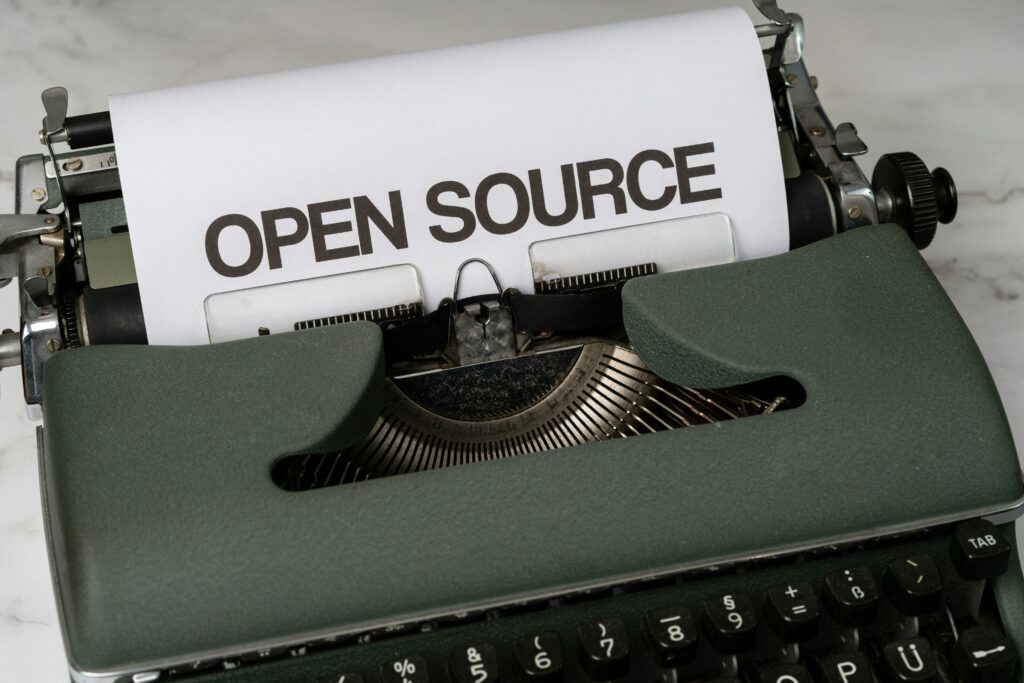Global AI Regulation Is Getting Real
Artificial intelligence is no longer operating in a legal gray zone. Countries around the world are rolling out legislation to define how AI can be used, monitored, and governed. These initiatives differ in scope and enforcement, but all aim to strike a balance between innovation and accountability.
The EU’s AI Act: A Global Benchmark
The European Union has taken a bold stance on AI governance with its AI Act, one of the first comprehensive legislative frameworks for artificial intelligence.
Key focus areas of the AI Act include:
- Risk-based classification: categorizing AI systems based on the level of risk they pose to users and society
- Strict rules for high-risk applications such as biometric identification, hiring systems, and credit scoring tools
- Transparency requirements for AI-generated content and automated decision-making systems
- Heavy penalties for non-compliance, aiming to ensure accountability across the AI supply chain
The EU’s approach sets a precedent and may shape international norms, especially among companies that deploy AI across borders.
The U.S. Approach: A Patchwork in Progress
The United States has not enacted a federal AI law yet, but momentum is building at both state and national levels.
Current trends in AI regulation in the U.S.:
- States like California and Illinois are leading with biometric privacy laws and AI-specific bills
- On the federal level, agencies like the FTC and NIST are pushing for ethical AI frameworks and voluntary compliance standards
- Congress is exploring legislation that addresses AI transparency and consumer protection without stifling innovation
This decentralized approach creates inconsistencies across jurisdictions, making compliance more complex for creators and companies alike.
China’s Early Lead in Algorithmic Oversight
China was among the first nations to regulate the algorithms that drive AI systems, focusing on how platforms use automation to shape behavior and engagement.
Highlights of China’s regulatory strategy include:
- Mandatory disclosures on how recommendation algorithms work
- User controls such as opting out of algorithm-driven feeds
- Restrictions on algorithmic discrimination and over-personalization
- Real-time monitoring of algorithmic systems by regulatory authorities
China’s regulations aim to reinforce state oversight and curb the negative social impacts of algorithmic decision-making.
Comparing Global Approaches
Although each country or region has a unique legal and cultural context, there are some overlapping priorities:
Shared regulatory themes:
- Transparency and explainability of AI systems
- Accountability for harmful outcomes from automated decisions
- Protection of individual rights and privacy
Key differences:
- The EU uses a unified, top-down legal structure, while the U.S. relies on a fragmented, bottom-up approach
- China emphasizes governmental control and social harmony, prioritizing state interests over individual autonomy
Understanding these different AI governance models is crucial for creators and developers operating in global digital spaces. Legislation is shaping not only how AI is built, but also how it can be used by content creators, platforms, and audiences around the world.
Governments around the world are sprinting to catch up with artificial intelligence. What started as scattered consultations and pilot frameworks has turned into a global push to regulate how AI is built, sold, and used. From the EU’s sweeping AI Act to executive orders in the United States and fresh legislation in Asia, there’s a growing consensus: the stakes are too high to leave unmonitored.
Lawmakers are moving fast because the technology is moving faster. Deepfakes, automated decision-making, and generative tools have created new legal gray zones with real-world risks—privacy breaches, misinformation, discrimination. It’s not just about reining in the bad actors. It’s about setting guardrails before the tech goes completely off-road.
The tech industry is responding with a mix of public collaboration and quiet resistance. Big players are sitting at the table, offering their own ethical guidelines and transparency reports. Startups, meanwhile, are watching warily as new rules could slow innovation or increase costs. Everyone agrees on the need for safety. No one agrees on how much freedom is too much.
The toughest challenge ahead is threading the needle—writing laws that protect citizens without freezing progress. It’s a fine line, and the world’s watching who gets it right.
The Double-Edged Sword of Regulation
Regulation is coming for the creator economy, and it’s not all bad. Guardrails can protect users from deepfakes, scams, and AI-generated content without context. That matters when trust gets chipped away daily. But too much red tape can suffocate what makes vlogging powerful in the first place—raw creativity and freedom to experiment in public.
The tension is clear. Clearer rules on disclosures and AI labeling may help legitimize vlogging as both art and business. But if small creators are buried in compliance checklists while bigger players have teams to navigate the red tape, regulation starts to look lopsided.
Startups and indie vloggers feel the squeeze hardest. They move fast, pivot often, and don’t have legal departments. Meanwhile, megacorps can play the long game, shaping policy while enforcing standards that work in their favor. This isn’t new, but in 2024, the gap’s widening.
Balancing safety and innovation won’t be easy. But one thing’s certain—creators need to stay informed, vocal, and prepared to adapt.
How Transparency and Compliance Are Reshaping R&D Timelines
Regulatory pressure is no longer just a speed bump—it’s a structural force reshaping how R&D teams work. In industries like biotech, AI, and consumer tech, transparency isn’t optional. Governments and watchdogs are stepping in with new data laws, ethical reviews, and product safety requirements. It means longer planning cycles and more proof-of-concept checkpoints baked into development from day one.
For companies in well-established tech ecosystems—places with infrastructure, legal guidance, and capital—compliance can be just another bullet point in the workflow. Annoying, sure. But manageable. In emerging markets, the rules hit differently. Resources are tighter, and the same demands can choke innovation before it ever takes off. Some startups are relocating or partnering to compensate. Others are going quiet.
Still, there’s a flip side. For companies willing to face the heat, this is a real chance to stand out. Meeting standards before they’re enforced builds trust. Anticipating regulation helps dodge costly backtracking. The sharp ones aren’t treating compliance as a tax—they’re treating it as a lever. The smart move in 2024 might not be fastest to launch, but fastest to meet the moment.
As Rules Tighten, So Do Security Priorities
Vloggers often think of storytelling, editing, and gear before considering cybersecurity—but that’s starting to change. Governments are tightening digital regulations worldwide, and creators need to take note. If you’re collecting viewer data, using AI-driven tools, or collaborating with international teams, you’re already operating in a space where compliance matters.
AI safety isn’t just a corporate concern anymore. Platforms and regulators are demanding more accountability from everyone, including solo creators. New laws are pushing better data handling, clearer transparency in AI usage, and stronger defenses against misinformation. Creators who adapt early—by updating their privacy practices, securing their accounts, and understanding what the tools they use are doing under the hood—stand to build more trust and stay a step ahead.
Don’t just skim the surface. For a grounded dive into upcoming security shifts, check out Forecasting Cybersecurity Threats That Will Shape 2025.
Vlogging at the Crossroads: Regulation and Innovation
As AI and content creation keep evolving, regulators are starting to catch up. Some regions are leaning into strict controls. Think mandatory content labeling, algorithm audits, or approval systems for generative tools. The goal? Curb misinformation, protect minors, defend privacy. But the flip side is slower innovation cycles and higher barriers for indie vloggers and small teams.
Other frameworks are more open. Countries with innovation-friendly policies are giving creators more room to experiment with AI workflows and monetization models. These environments attract startups, talent, and capital—but they also risk becoming loophole havens if ethics and transparency aren’t baked in.
Then there’s the cross-border mess. One country’s data standard clashes with another’s privacy law. What flies on one platform might get banned elsewhere. Creators who post globally have to think like diplomats—navigating IP issues, cultural sensitivities, and GDPR-style compliance whether they want to or not.
Bottom line for devs, startups, and investors: regulation isn’t going away. The winners will be those who build flexibly, plan for murky legal zones, and stay lean enough to pivot. Whether you’re coding new tools or funding the next big creator platform, this landscape needs eyes wide open.
Regulation and innovation are heading toward a collision point. Creators and platforms are being watched more closely now. Governments want to rein in the Wild West feel of online content, while tech keeps charging forward. It’s a tough balance to strike.
Rules are necessary. No one’s arguing for chaos. But overreach can shut down creative momentum. Vloggers need room to try new formats, test unusual ideas, or integrate new tech—like AI-driven storytelling—without worrying they’ll immediately get flagged or throttled.
Two things can be true at once: regulation is part of the new landscape, and innovation will keep breaking boundaries. The smart move is to stay informed and nimble. Know what’s changing, but don’t let fear of rules slow you down.
This next chapter is about keeping your eyes open and your process flexible. Creators who adapt, not panic, are the ones who’ll shape what’s next.



 Jorlina is the co-founder of flpsymbolcity, specializing in digital symbol mapping and typographic structure. She explores how system fonts, emoji libraries, and symbol standards evolve across devices. Through her strong analytical writing, she brings clarity to how symbols connect global users in the digital space.
Jorlina is the co-founder of flpsymbolcity, specializing in digital symbol mapping and typographic structure. She explores how system fonts, emoji libraries, and symbol standards evolve across devices. Through her strong analytical writing, she brings clarity to how symbols connect global users in the digital space.

